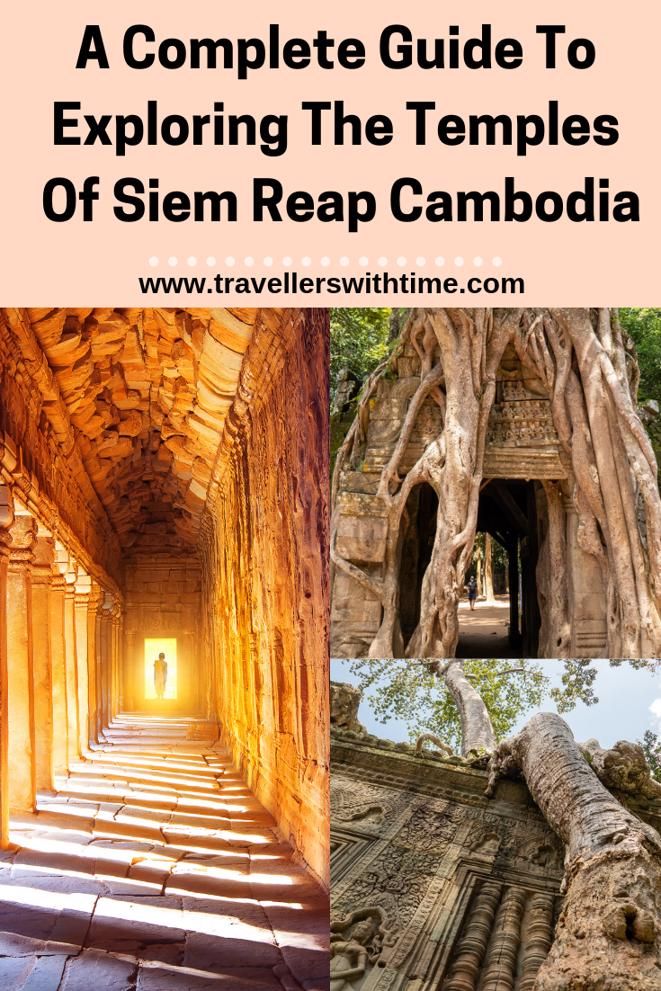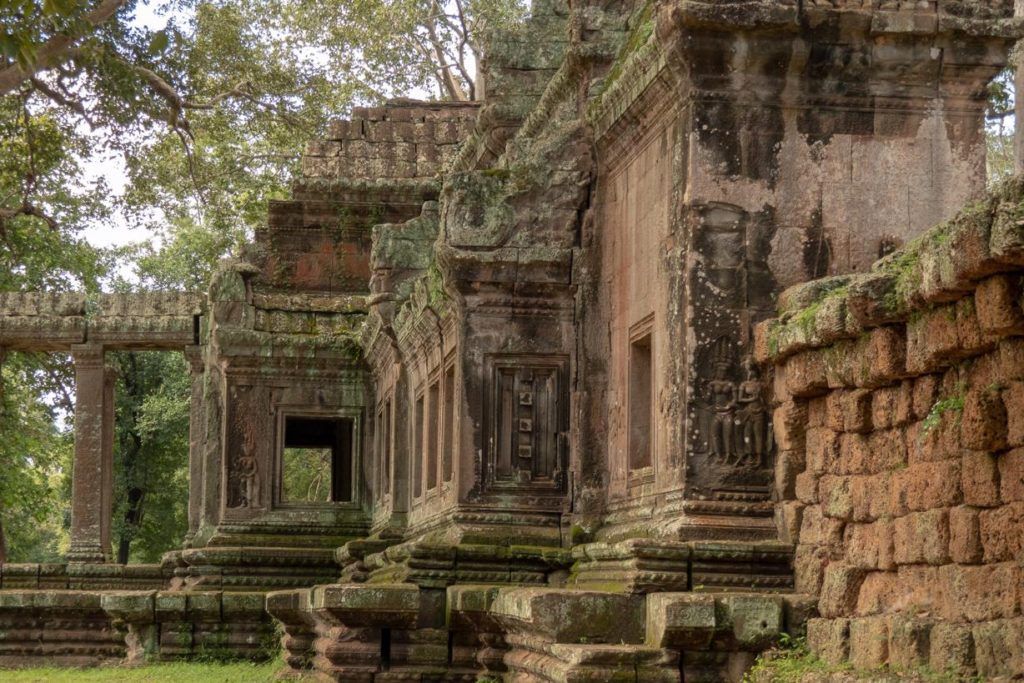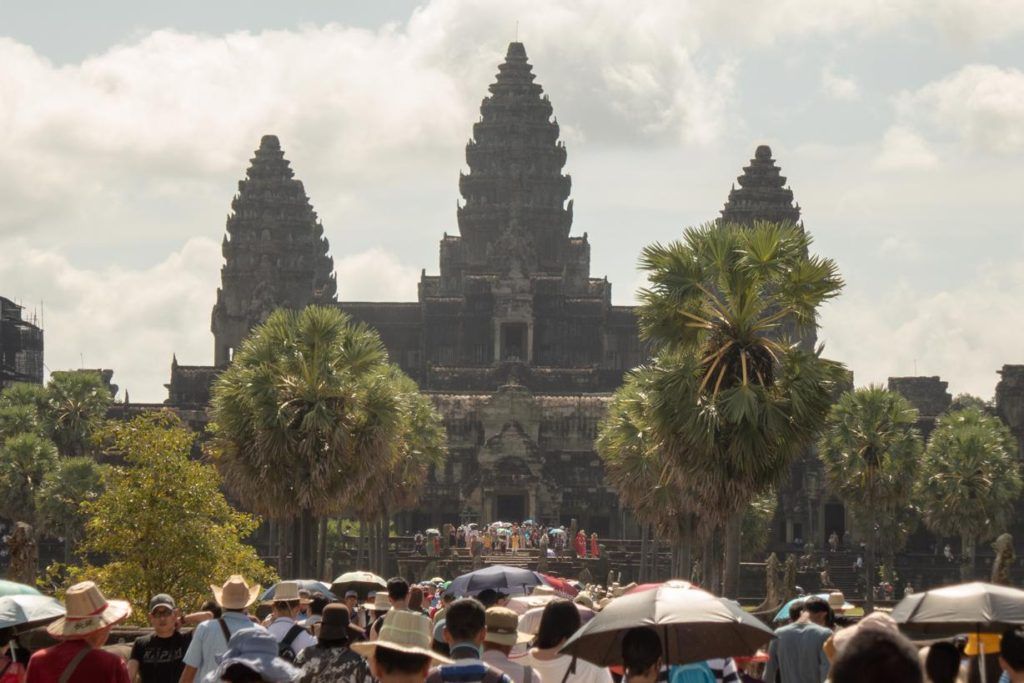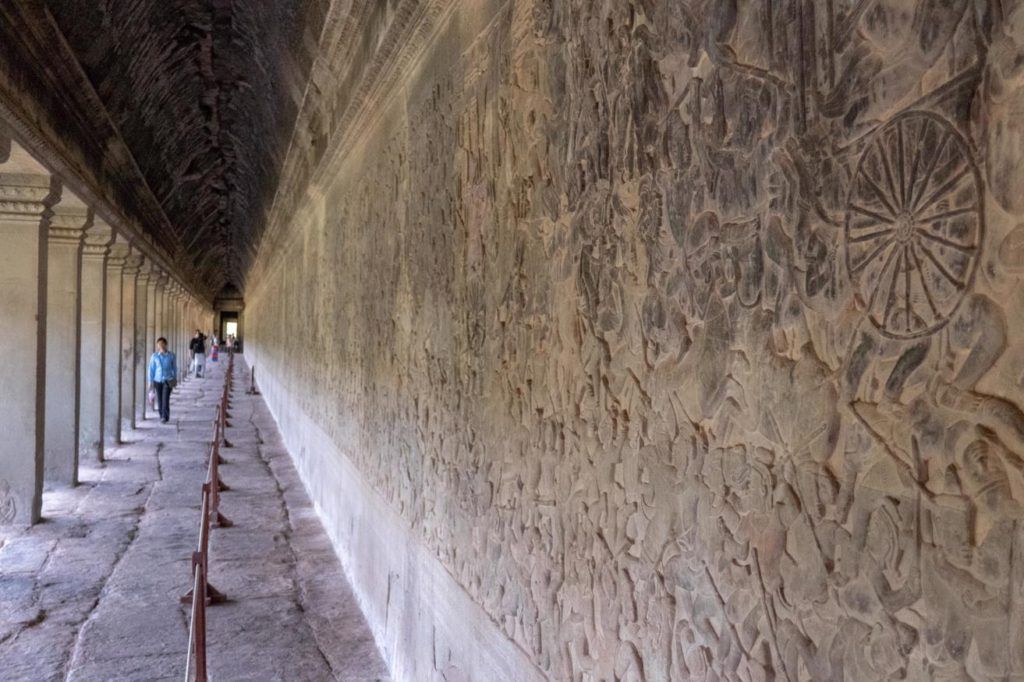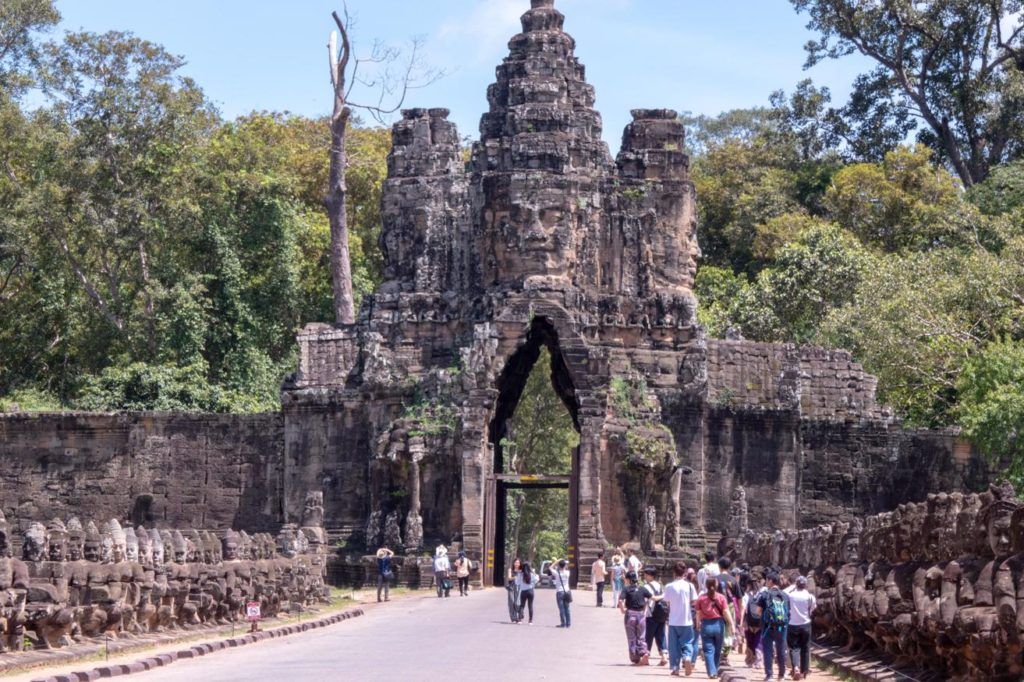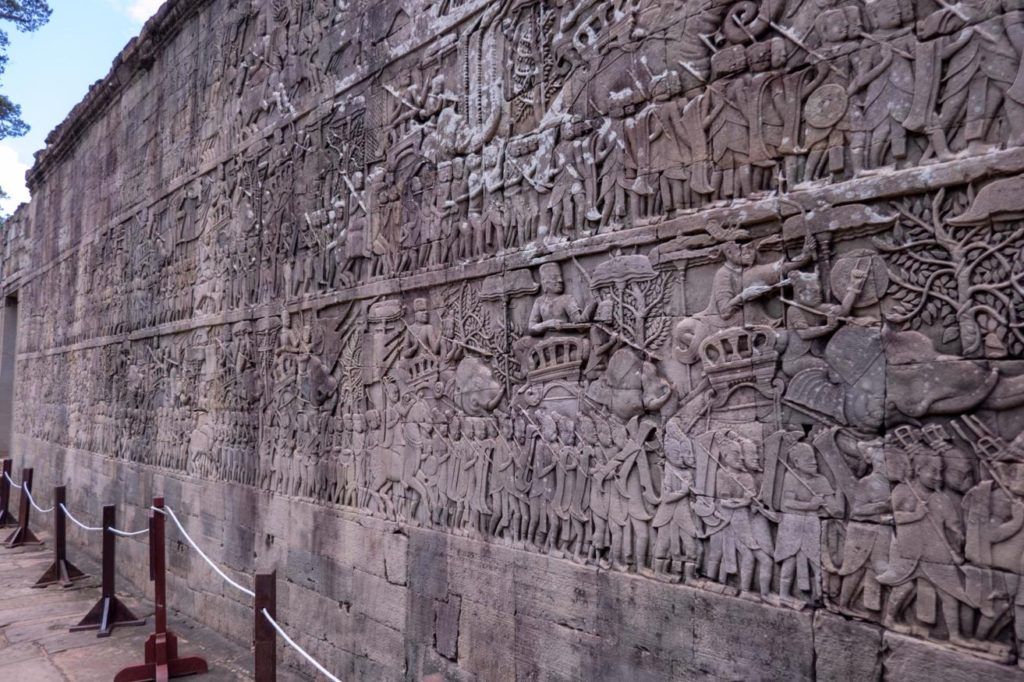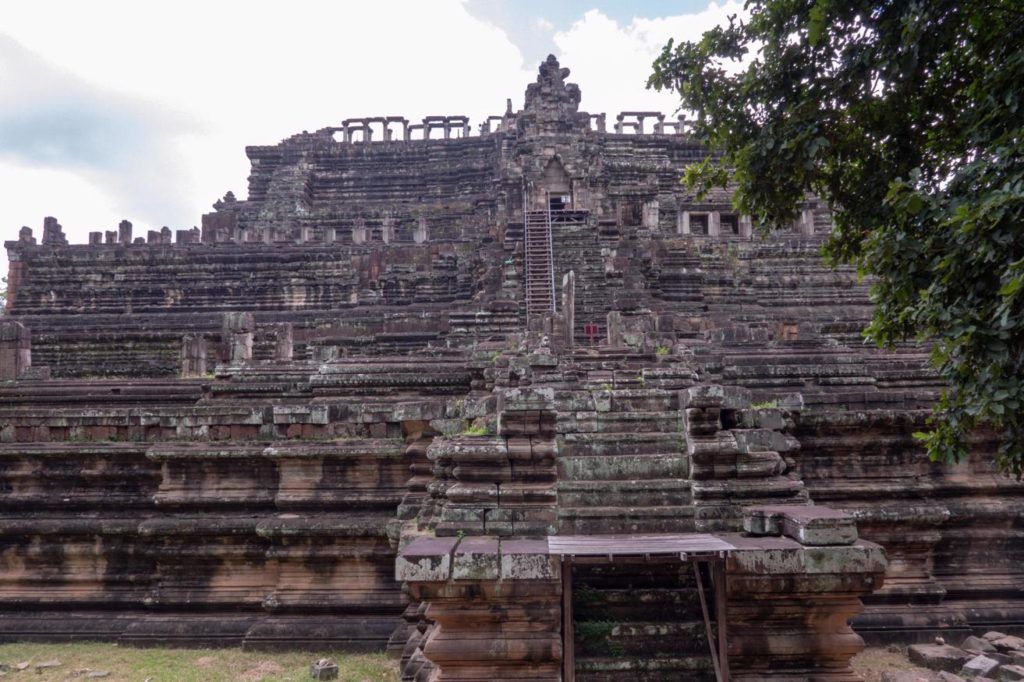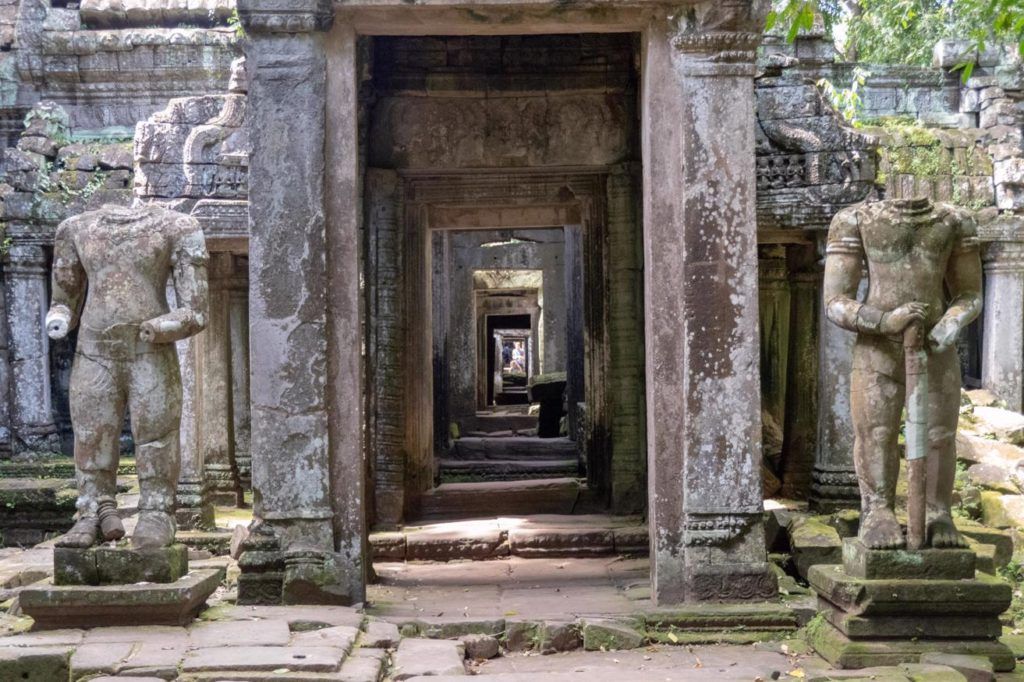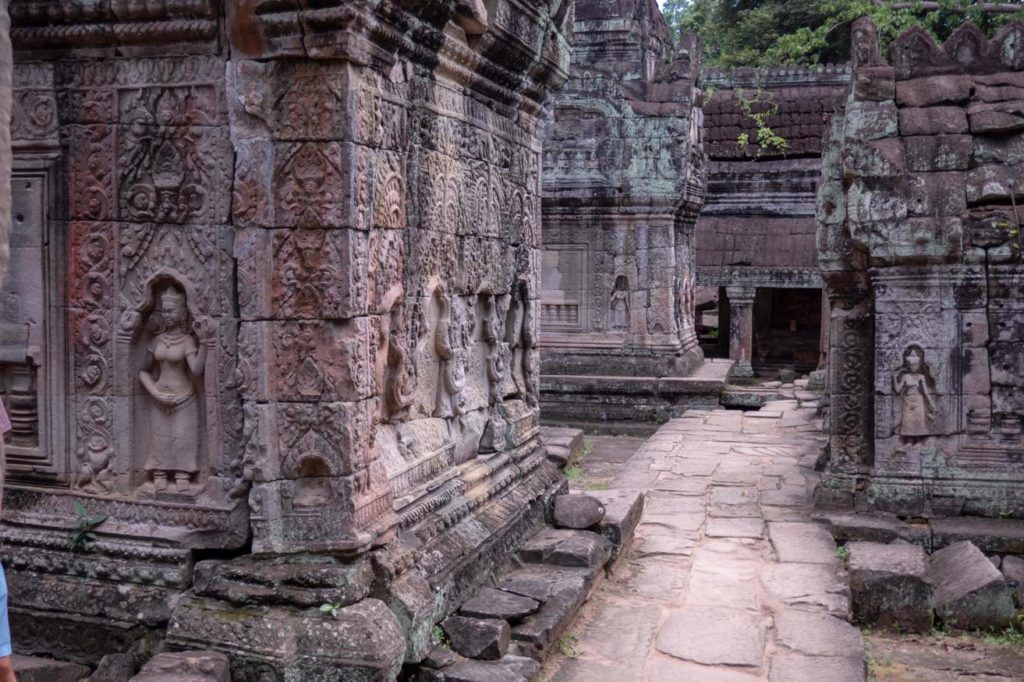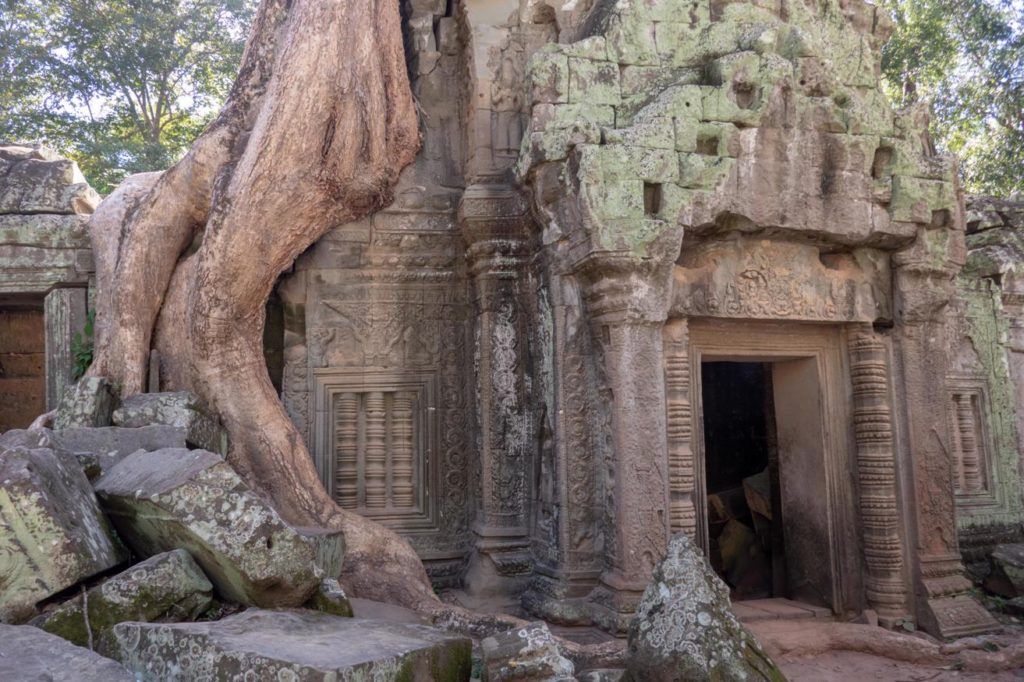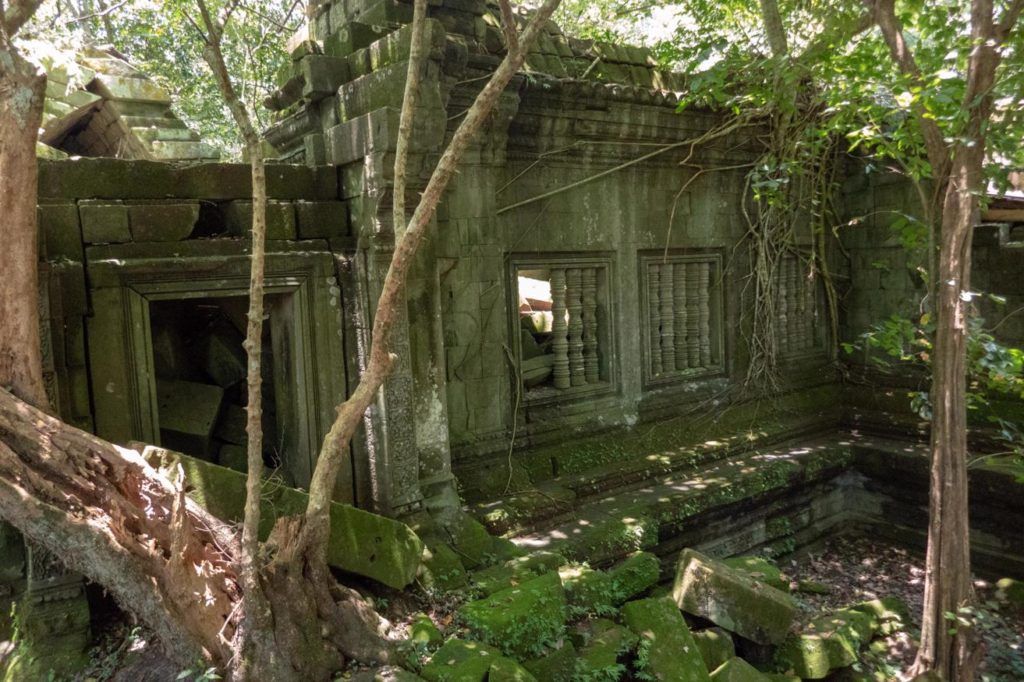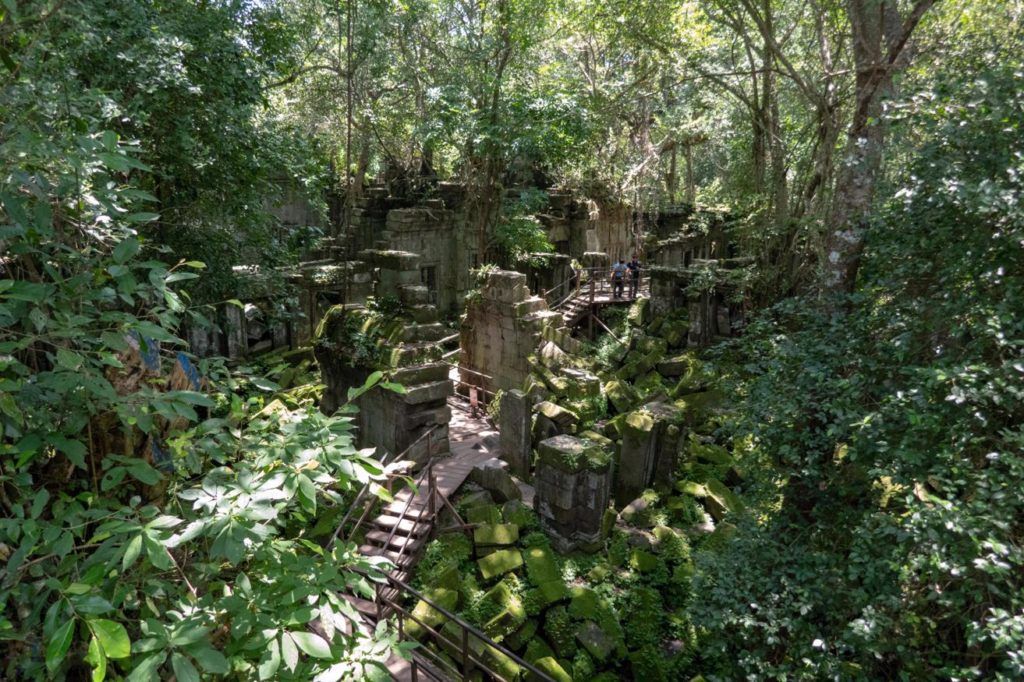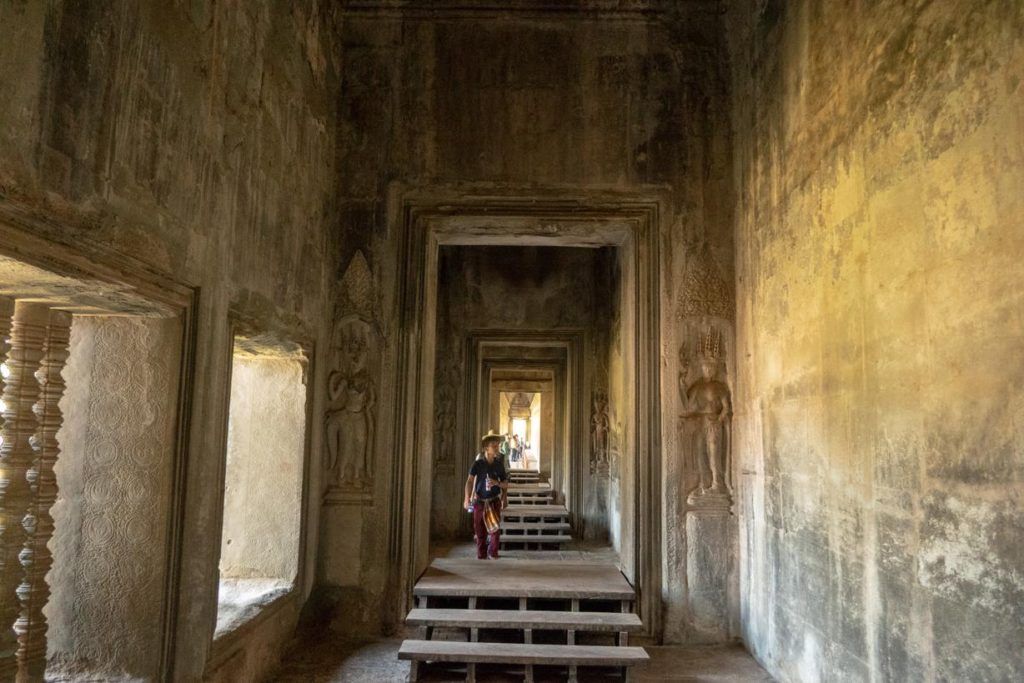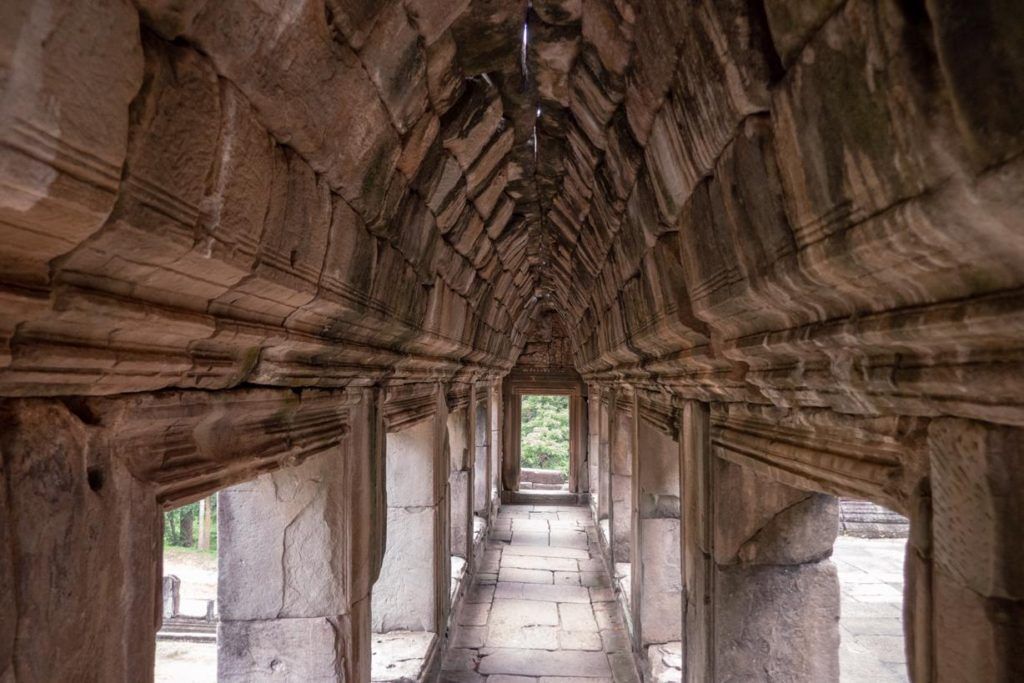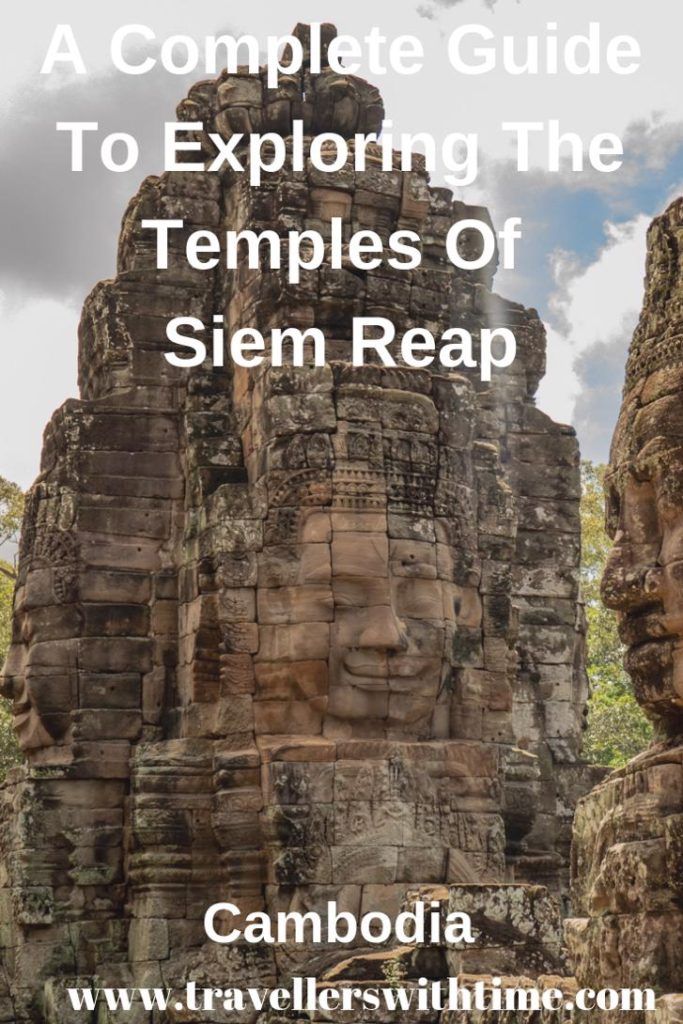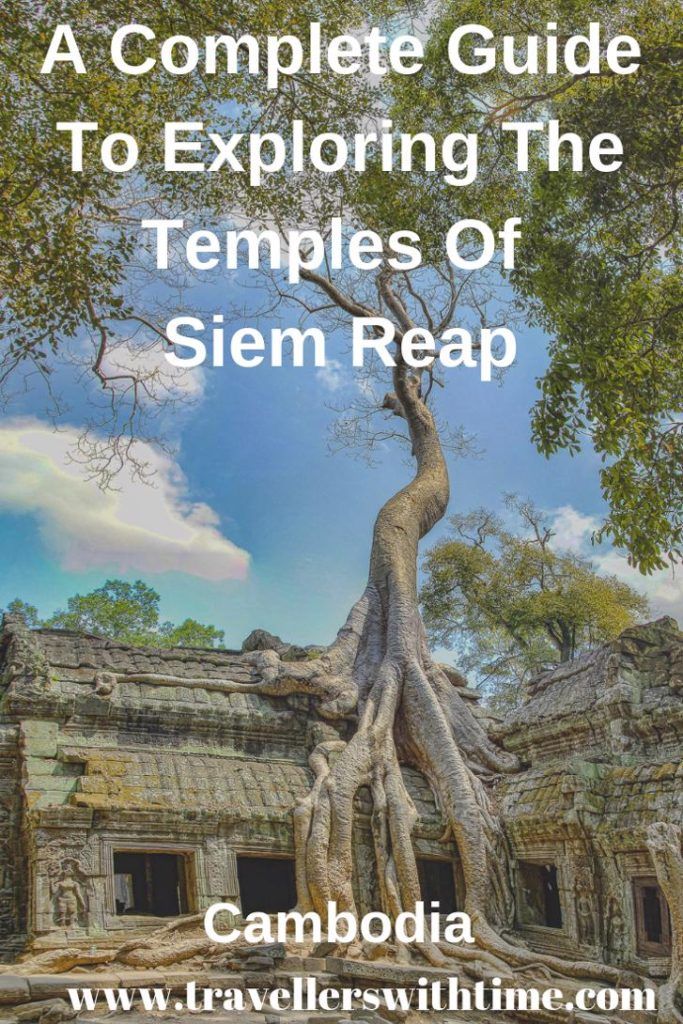Temples of Siem Reap – Everything you need to know before you go
The temples of Siem Reap are one of the highlights of Cambodia and South East Asia. We generally try not to do the same activity twice, but while I had explored the temples of Angkor in 2014, Ben had never seen them, so we had always intended to go back. After all, you can’t go to Cambodia and skip it.
This article may contain affiliate/compensated links. For more information, please see our disclaimer here.
If you’ve spent any length of time in Asia, you’ll know it is entirely possible to get ‘templed-out’. There are just so many of them. That’s how Ben was feeling by the time we bought a 3-day pass to the Angkor Archaeological Park. Given that the tickets are not cheap, I was quite anxious about whether Ben was going to end up enjoying the days after I kept building it up.
Thankfully he did enjoy it and of course felt that the three-day ticket was worthwhile. We just won’t be visiting many other temples for a while…
Siem Reap Temples history
The Angkor Archaeological Park is a UNESCO world heritage site located in Siem Reap Province, Cambodia. It is the largest religious site in the world, home to over 72 major temples. In total, over 1000 structures are located around an extended area of the region.
Construction of the temples within the Angkor Archaeological Park began in the late 9th century. The area was abandoned by 1431 after it was invaded by Ayutthaya, the Thai Empire. During the period that the Angkor region operated as the Empires capital over 27 Kings ruled over the area. The city itself was an enormous and thriving city, especially during the years of 1010 and 1220.
Yasovarman I was an Angkorian King who reigned for 21 years, between 889 and 910. It was Yasovarman I who moved the Khmer capital to Angkor.
Originally, many of the structures built under Yasovarman I were Hindu. Although over the years, as Buddhism came into prominence alterations were made to convert the Hindu temples to Buddhist temples under the reign of Jayavarman VII, who had himself converted to Buddhism. When Jayavarman VII passed away, Hinduism made a resurgence and many of the Buddhist images were desecrated.
All the remaining structures within Angkor Archaeological Park are religious in nature as only religious structures were made using stone. All other structures were made using perishable materials such as wood and have therefore not stood the test of time. All the inscriptions and iconography around the temples are religious.
While there are plenty of things to do in Siem Reap, the temples of Angkor are absolutely the main attraction.
The Lonely Planet Pocket Siem Reap & the Temples of Angkor is a fantastic little pocket guide to the temples and all the hidden little details of them.
Quick facts
How many temples in Siem Reap?
There are 72 major temples in the Angkor Archaeological Park
How old are the temples of in Siem Reap?
The temples of Angkor vary in age, but the oldest are around 1100 years old.
Must see temples of Siem Reap
With so many temples to choose from, we’ve put together our top recommendations of must see temples. You won’t want to miss these ones!
Angkor Wat
Angkor Wat history
Located about 5.5km from Siem Reap City, Angkor Wat was built by King Suryavarman II between 1113 and 1150 as his personal mausoleum. Originally built as a Hindu temple, it is dedicated to the Hindu God Vishnu. The physical layout portrays Hindu cosmology and the walls are decorated with scenes from both Hindu mythology and the life of Suryavarman II’s imperial court.
During the 12th century Angkor Wat began to be altered to reflect a transition to Buddhism.
The architectural style of Angkor Wat is a classical Khmer style, known as the Angkor Wat style which it is named after. It is primary constructed of sandstone and some laterite.
Thankfully, during the rule of the Khmer Rouge, little damage was done to Angkor Wat, however it didn’t escape completely unscathed.
Quick facts
When was Angkor Wat Built?
Angkor Wat was built between 1113 and 1150
Why was Angkor Wat built? What does it represent?
It was built by King Suryavarman II as his mausoleum
Is Angkor Wat Buddhist or Hindu?
Angkor Wat was originally Hindu but was later altered in conjunction with a religious transition to Buddhism.
The temple of Preah Vihear near the Thai border predates Angkor Wat and remained a Hindu temple throughout the years.
Visiting Angkor Wat
When you arrive at Angkor Wat, make sure you take the time to look at it from a distance, as it is spectacular from afar with its towers rising. Also make sure you take a close look at the beautiful bas-reliefs, or carved images of Hindu mythology that line the walls.
Angkor Wat takes a few hours to take in. It’s the kind of place that the more you look the more you see.
There is a very steep staircase up to the centre of Angkor Wat. Due to its gradient, the number of people going up and down are staggered so it can take quite a while to get up to the top. Just to be clear, when I say steep, I mean steep, its not for the faint hearted. Part of the traffic jam on the stairs to the temple is people trying to get down them, backwards, sideways, slowly…
Best time to visit Angkor Wat
Sunrise or sunset?
Sunrise is a great time to see Angkor Wat as the sun rises behind it. To be honest, if you’ve seen those spectacular photos of the sunrise with zero people in them, it helps to know your photo’s will not look like that. There will be thousands of people there with you all trying to get the same shots. You will have photos of them taking photos. None the less, the view is spectacular.
Sunset is not as beautiful as the sunrise, however it’s usually a lot less crowded.
How much time to visit Angkor Wat?
The amount of time you spend at Angkor Wat is up to you and how much you want to explore. 2-3 hours should do it, unless you’re stuck in the long line for the stairs…
Angkor Thom
In 1181 Jayavarman VII ascended to the throne after King Suryavarman was killed during an attempted invasion by the Cham Empire (Vietnam). Jayavarman VII constructed the walled city of Angkor Thom on top of the ruins of the destroyed city. At the centre he had the Bayon temple built. Bayon was the spiritual centre of Angkor Thom.
The centre of the walled city is accessed via five decorative entrances, each with a gate that has 4 faces, like the Bayon towers. In addition to Bayon, Angkor Thom is also the home of other must-see sites such as the Terrace of Elephants and the Terrace of the Leper King.
Other beautiful temples built by Jayavarman VII include Ta Phrom and Preah Khan, located outside the city gates.
All the temples built by Jayavarman VII were built as Buddhist temples as Jayavarman VII had converted from Hinduism to Buddhism. All temples in the area built prior to his reign, i.e. in a Hindu style, were altered to reflect the transition to Buddhism during this time.
Angkor Thom was the last capital of the Angkorian rule.
Is Angkor Thom part of Angkor Wat?
Angkor Thom and Angkor Wat are two separates ‘cities’ inside the same Angkor Archaeological Park. The name Angkor is a Sanskrit word that translates to City. So, there is City Wat, and City Thom, and they’re located about 4km apart.
Bayon Temple in Siem Reap
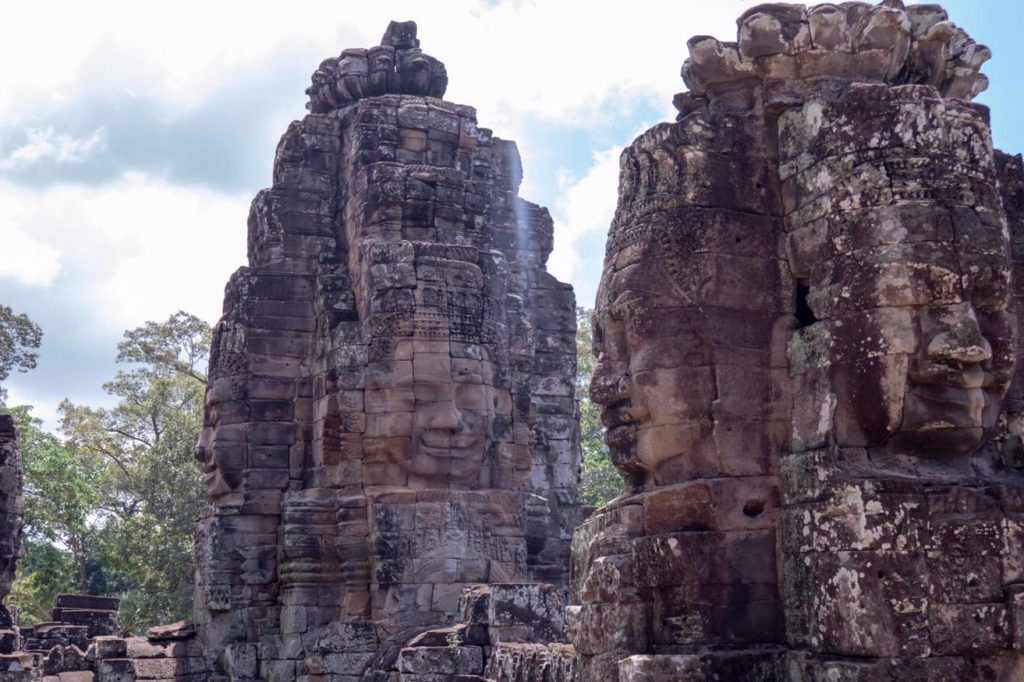
Bayon Temple history
Bayon Temple is both the physical and spiritual centre of Angkor Thom. Construction started somewhere around the late 12th century. It was the state temple during the reign of both Jayavarman VII and Jayavarman VIII.
Bayon Temple architecture
What style was Bayon Temple built? You guessed it, the Bayon style. Bayon is known for its towers with beautifully serene Buddha faces. Originally there would have been 54 towers however there are now only 37 towers standing. While most towers have 4 peaceful Buddha faces, there are some that have less. This adds up to a total of 216 Buddha faces.
The tower faces are said to represent the king, Jayavarman VII as the Bodhisattva Avalokiteshvara. A Bodhisattva is a person who can reach enlightenment but compassionately delays nirvana to save suffering beings.
Quick facts
Who built Bayon Temple?
King Jayavarman VII built Bayon as the spiritual centre of the city of Angkor Thom.
How many faces on Bayon temple
There were originally 216 faces on the towers of Bayon Temple.
Visiting Bayon Temple
Don’t panic when you first start approaching Bayon. It’s impossible to see its appeal from a distance, but make no mistake, Bayon is a beautiful temple. The closer you get, the more pronounced the faces become. No matter where you’re standing you can see numerous peaceful Buddha faces at all angles of the towers.
Aside from the many, many faces, Bayon has over 1.2km of bas reliefs containing over 11000 figures lining its walls. The carvings on the first level are the best so take the time to enjoy them here.
Most people will visit Bayon after Angkor Wat, so the morning is usually quite busy, but it’s a good time to go and is generally not as busy as Angkor Wat at any time of the day.
Baphuon Temple
Baphuon temple history
Located in Angkor Thom, Baphuon was built in the mid-11th century. It was built as a state temple by King Udayadityavarman II and is dedicated to the Hindu God Shiva. Baphuon therefore predates Angkor Thom, and Bayon, with Angkor Thom’s walls being built around the outside of the existing structure, enclosing the older building inside the new city.
Baphuon Temple style
Baphuon is a three-tiered temple, and the original standard for the Baphuon style of architecture, with carvings covering every surface of the temple.
In the late 15th century, the temple was converted into a Buddhist temple and a large 9m by 70m statue of a reclining Buddha was built on the second level. The statue was never finished however and is not the most glaringly obvious image.
Baphuon is one of the few temples to have been completely restored. When it was constructed it was constructed on earth and sand and was therefore incredibly unstable over time. Reconstruction finished in 2011.
Visiting Baphuon
Baphuon Temple is located diagonally to Bayon. Depending on where you have parked, it is less than a kilometre in distance, at the shortest point I’d say it’s a few hundred meters.
Some maps of Angkor indicate that Baphuon is right next to a gate to exit Angkor Thom (the map that we were using for example), but it is not. You enter it right off one of the main roads running off Bayon.
Baphuon will probably only take you around an hour or so to explore.
Preah Khan
Preah Khan temple history
Preah Khan is a beautiful temple built by Jayavarman VII around 1191 outside the walls of Angkor Thom and to the north east. Jayavarman VII dedicated the temple to his father. It appears to have been a Buddhist university and a large city. Over 430 deities had shrines at Preah Khan, so the upkeep and the resources that were poured into it were extensive. There were close to 100000 attendants and servants there.
Preah Khan temple style
Preah Khan is built in the Bayon style as it was built by the same King as Bayon and Ta Phrom.
Visiting Preah Khan
You’ll probably want to spend at least an hour, if not more here. It’s a pretty temple with a beautiful layout.
It was surprisingly quiet at Preah Khan, much quieter than Ta Phrom, despite the similarities in the temples. Preah Khan is also a rooted, forest temple with some beautiful giant tree’s weaving their roots through the structure of the temple.
Ta Phrom Temple
Ta Phrom history
Ta Phrom, built in the Bayon style by King Jayavarman VII, was built between the 12th and 13th centuries. It was dedicated to the King’s mother. According to the inscriptions on its stele, or the stone with inscriptions describing its history, there were once 12500 people living in Ta Phrom.
Ta Phrom trees
Ta Phrom is known as the temple in the jungle. While much of the encroaching jungle has been cleared, the huge tree’s that have taken hold in the walls and roof of Ta Phrom remain, both contributing to its ruin and its beauty. Many parts of the temple are now impassable as their passageways are filled with rubble.
There are two types of tree’s calling Ta Phrom’s structure home – the larger silk cotton trees which have thick, knobbly, pale roots, and the strangler fig trees, or banyan trees, which have a lot of thinner, grey roots.
Visiting Ta Phrom
Ta Phrom is a busy temple thanks to its beauty, the unusual appearance of giant trees interwoven in its structure and due to it being featured in the movie Tomb Raider.
When you arrive, you’ll see arrows pointing indicating the ‘way of visit’. I suggest you follow those if you can. We veered off course and were constantly hit with dead ends that we couldn’t get through. We also found it challenging to go against the huge amount of traffic when we tried to go the wrong ‘way of visit’, its easier to go with the flow!
Ta Phrom is around 11 km east of Angkor Thom.
Beng Mealea Temple
While it’s quite a bit further than most other temples, if you have any chance to go to Beng Mealea, do it, it is magnificent.
Beng Mealea temple history
Beng Mealea was built in the middle of the 12th century by King Suryavarman II. While the temple itself is built in the Angkor Wat style, the designer remains unknown.
Beng Mealea was built, like Angkor Wat as a Hindu temple, and there are extensive carvings from Hindu mythology throughout the temple. There are some Buddhist images present.
The temple is surrounded by an enormous moat.
Like Angkor Wat, Beng Mealea is constructed of sandstone, which has helped it to withstand (somewhat) the encroaching jungle. I say somewhat because Beng Mealea is largely in ruins as the silk cotton and strangler fig trees, and plenty of moss have taken hold. This truly is a temple in the jungle.
Visiting Beng Mealea
Beng Mealea requires at least a half day trip as it is 77km by road from Siem Reap city and around 40km east of the main temples of Angkor, but it is well worth the trip.
A wooden walkway has been constructed throughout the inside of the temple and although you can’t walk ‘on’ Beng Mealea, the views from the walkway are beautiful. It is one of the prettiest temples in the region and there is no denying that in its prime, it would have been simply phenomenal. There’s a magical feel to the whole area.
Not long after arriving at Beng Mealea Ben said that if anyone asked him which one temple they had to visit, he would tell them to come straight to Beng Mealea first.
Joining a Beng Mealea tour
Tours of Beng Mealea can be organised from Siem Reap. If you want to pre-arrange a tour, we recommend this Beng Mealea and floating Villages tour which takes you through the Cambodian country side. After exploring Beng Mealea you’ll head to the Tonle Sap lake to Kampong Khleang, a floating village with over 10,000 residents.
Visiting Beng Mealea without a tour
How to get to Beng Mealea
Beng Mealea is easy to access from Siem Reap by motorbike, the main roads are in good condition, although it will take you over an hour to get there.
Beng Mealea map
Purchasing a ticket for Beng Mealea
As Beng Mealea is technically outside the Angkor Archaeological Park it has its own entrance fee, which is only $5 USD per person. Naturally, you can’t buy the tickets at the entrance to the temple. There is a ticket office about 1.5km away, on the main road coming from Siem Reap, just before you turn left to Beng Mealea.
Beng Mealea dress code
Make sure you don’t wear any short shorts or sleeveless tops. It’s always a good idea to dress respectfully at any religious or historical site in Cambodia
Tips for Visiting Angkor Wat and the temples of Siem Reap
Planning a trip to Angkor Wat and other temples
Siem Reap Temple Itinerary
Your Itinerary for visiting the temples of Siem Reap will really depend on whether you want to buy the one, three or 7-day tickets and how many temples you want to see.
How many days are needed to see Angkor Wat and the temples of Siem Reap?
Remembering Beng Mealea has its own entrance fee, if you just wanted to see the 5 temples above, Angkor Wat, Bayon, Baphuon, Preah Khan and Ta Phrom, you could easily do that in one day, with time to see a few others too. While the area of the Angkor Archaeological Park is large, you will often pass other temples on the way to the ones you want to see, so it’s possible to stop off for a look.
If you wanted to see a lot more temples, or some of the temples that are further away from Siem Reap City, the 3-7-day ticket is best.
Small Circuit and Grand Circuit
Two circuits have been layed out for you if you so you can see a variety of temples within a given time frame. All you have to to is follow the directions!
The Small Circuit
The small circuit covers Angkor Wat, Ankgor Thom, Ta Phrom, Baphuon and other temples such as Banteay Kdai, the Terrace of the Leper King and the Terrace of Elephants. The Small Circuit is about a 17km round trip and it is possible to to in one to three days. To do it in one day you’d want to have a motorbike or tuk tuk and move fairly quickly.
The Grand Circuit
The Grand Circuit is around 26kms and is an extension of the small circuit. It includes temples like Preah Khan, East Mebon, Ta Som and Preah Rup. It is best done in 3 or more days.
Keep in mind that depending on what time of year you visit, it may be hot. Very hot. There are also quite a few stairs, not all which area easy to climb, to see the tops of some of the temples. It can be quite tiring walking around and exerting yourself in the heat like that. Therefore, to really enjoy your time at Angkor, I’d plan conservatively and give yourself time. Try to avoid running from temple to temple like a lunatic, allow some down time in between. A cold coconut goes down well between temples.
Temple tours in Siem Reap
You can book tours of the temples through many hotels and tour companies in Siem Reap City. These can either be group tours on tour buses, private tours by car, or small tours by tuk tuk.
When you arrive at the bigger temples you will often be able to find a guide at the entrance.
If you want to book a tour in advance there are quite a few great options.
If you’re interested in exploring the temples of Siem Reap by bicycle, the Angkor temples bike tour is a great way to explore the Archaeological Park. You’ll have a local guide as you cycle around and explore the temples.
A two day tour of the small circuit and big circuit will give you a great overview of the different temples and their styles. You’ll also get to see both the sunrise and sunset over the park.
If you’re interested in seeing both the temples closest to Siem Reap and Beng Mealea, the Small circuit plus Beng Mealea tour is for you. You’ll get to do the small circuit on day one, and on day two visit Beng Mealea and Tonle Sap lake.
Visiting the temples of Siem reap without a tour
It is easy to access the Angkor Archaeological park from Siem Reap by motorbike, bicycle or tuk tuk.
Temples of Siem reap entrance fee
A one-day pass to the temples costs $37. The ticket is valid for the day of purchase only. If you buy your ticket after 5pm, you can access the park that night, as well as the next day, which means you can watch the sunset on the night you purchase your ticket, and still explore the entire next day.
A three-day pass costs $62 and is valid for any 3 days within a 10-day period.
A seven-day pass costs $74 is valid for 7 days in a calendar month.
Where to buy tickets for the temples of Siem Reap
There is only one ticket centre for the Angkor Archaeological Park and interestingly, is located about 4km from the park itself. It is called the Angkor Ticket Centre, or Angkor Enterprise. It can be a bit tricky to find, so here is a map.
Angkor Ticket Centre Map
The Angkor Ticket Centre is open from 5am until 5.30pm daily.
Temples of Siem Reap opening hours
While most of the temples are open from 7.30am until 5.30pm daily, a few of the temples have different opening hours, usually to reflect the sunrise and sunset viewing times.
Angkor Wat opening hours
Angkor Wat and the Srah Srang temple are open from 5am until 5.30pm daily
Phnom Bakheng and Pre Rup are open from 5am until 7pm daily.
What to wear to temples of Siem Reap
The dress code for the temples in Siem Reap has become stricter in recent years. You will need to cover your knees and shoulders. For men, normal knee length shorts are fine.
When to visit the temples of Siem Reap
Typically, the best time to visit the Angkor Archaeological Park is between November and April each year as it is the dry season, so you’re less likely to be rained on. The temperatures during this time are good.
Where to stay in Siem Reap
Siem Reap has a great range of accomodation to fit all budgets. Whether you’re looking for budget accomodation, guest houses and homestays or luxury resorts, booking.com has over 940 options for you to choose from.
We spent our time at the Naga Angkor Hotel and really enjoyed it. The rooms were lovely and clean and the staff are phenomenal. It was one of those places where you can tell that they really understand both local, and foreign culture and they mix them beautifully.
The food at the Naga Angkor Hotel was also great. The stuffed peppers with feta and vegetables were my favourite, whereas Ben really enjoyed the Blue Cheese Burger, and the Avocado Burger.
The other thing we liked was that its only a 5 minute walk to pub street and the markets.
Where are you heading next?
If you love temples, Battambang has some beautiful ones, namely Phnom Banan and Ek Phnom. A great way to see them is on a Battambang tuk tuk tour.
If you’re heading to Phnom Penh, don’t forget to check out our guide to things to do in Phnom Penh.
This article contains affiliate links. For more information, please see our affiliate disclaimer here.
Like it? Pin it!
